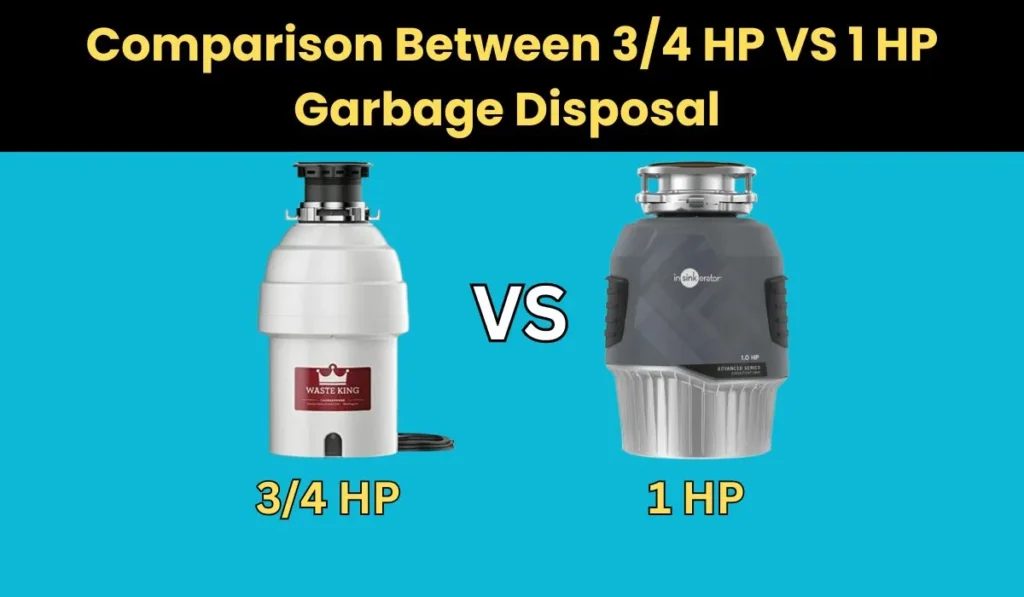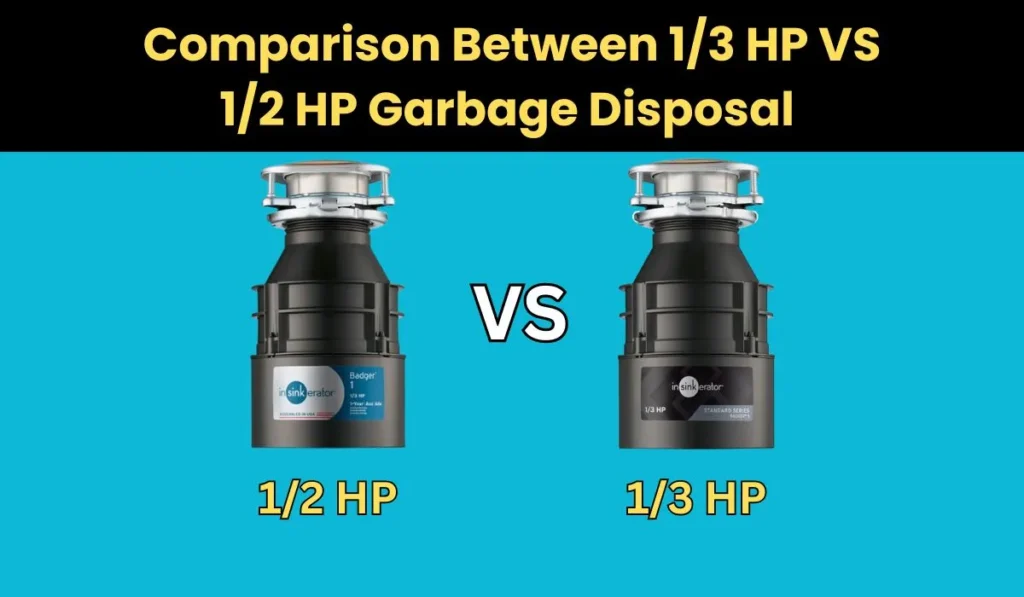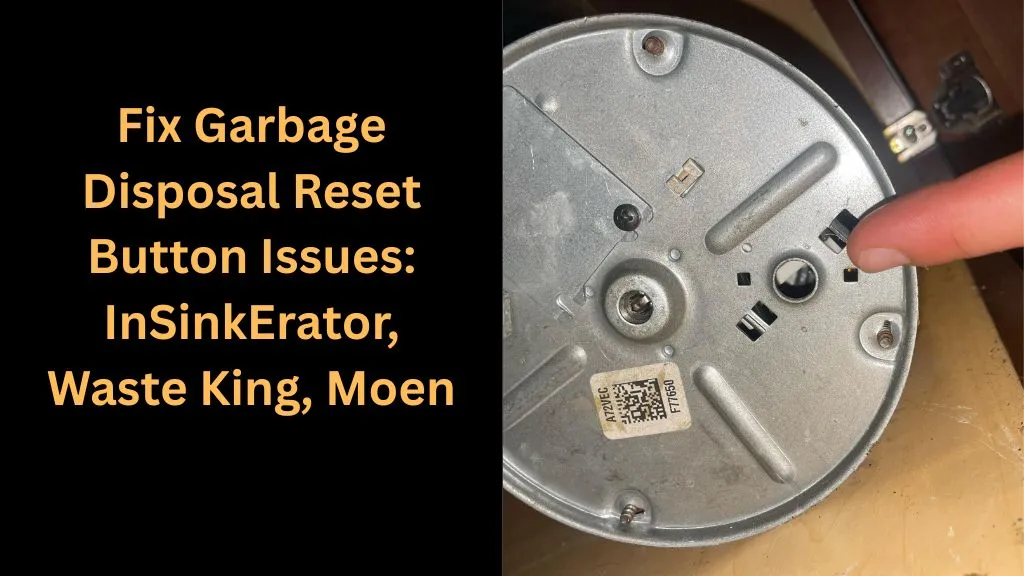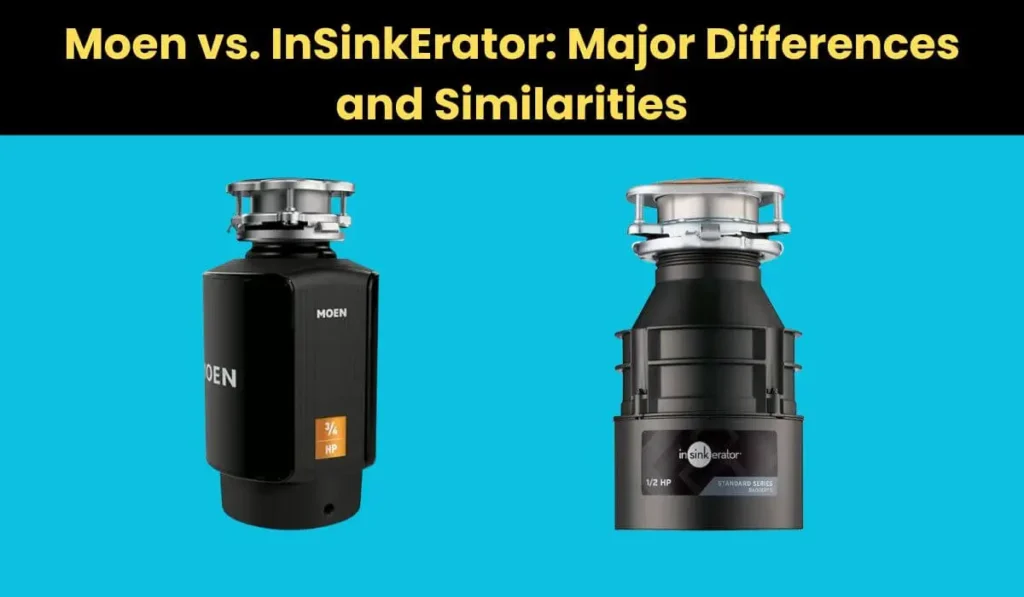How Many Amps Does a Garbage Disposal Use? Key Insights
Installing or upgrading a garbage disposal isn’t just about power or noise level. Understanding how many amps the unit uses is equally important. The amperage determines how much electricity your disposal draws and whether your kitchen’s wiring, circuit, and breaker can handle it safely.
Below, we’ll break down how many amps garbage disposals typically draw, how horsepower (HP) relates to current, and what you should know before connecting one to your kitchen circuit.
Garbage Disposal Amperage by Horsepower
Standard Units (1/3–1/2 HP)
Smaller garbage disposals — the kind typically used in apartments or for light kitchen use — draw between 5 and 8 amps while running.
For instance, a 1/3 HP model like the InSinkErator Badger 1 pulls roughly 5.6 amps, while a 1/2 HP unit sits around 5.7 amps. These numbers represent normal operating loads, though the current can spike briefly when the motor first starts.
High-Power Units (3/4–1+ HP)
Larger disposals used in bigger homes or for heavier kitchen waste usually draw 9 to 15 amps, depending on motor design. A 3/4 HP model averages about 9.5 amps, while a 1 HP disposal can range anywhere from 7 amps on energy-efficient models to as high as 15–20 amps on premium, high-torque versions.
Approximate Amperage Chart by Horsepower
| Horsepower (HP) | Typical Amp Range | Average Example |
|---|---|---|
| 1/4 – 1/2 HP | 4 – 8 amps | ~5.5 A average |
| 3/4 HP | 9 – 11 amps | ~9.5 A average |
| 1 HP | 7 – 15 amps | ~10–12 A average (some heavy-duty units reach up to 20 A) |
Amps vs. Watts: Understanding Power Consumption
What’s the Difference?
- Amps measure how much electrical current a device draws.
- Watts measure total power usage (Amps × Volts).
At 120 volts, every amp equals about 120 watts. So, if a garbage disposal draws 10 amps, it consumes roughly 1,200 watts (1.2 kW) while operating.
Energy Use vs. Circuit Load
Amperage matters most for electrical safety — ensuring your breaker doesn’t trip and wires don’t overheat. Wattage, on the other hand, tells you how much energy it consumes over time.
Even a large disposal doesn’t use much power overall, since it typically runs for only a few minutes a day. On average, that’s less than 5 kWh per year, or just a few cents on your electric bill.
Takeaway: Always check both amps (for safety) and watts (for efficiency) when comparing models. It helps ensure your wiring and circuit can safely support your disposal.
Choosing the Right Garbage Disposal
1. Match the Size to Your Kitchen Use
For small households or light food prep, a 1/3 or 1/2 HP disposal (5–8 amps) works perfectly fine.
If you cook frequently or have a larger family, opt for 3/4 to 1 HP (9–15 amps) — these handle tougher waste like small bones and fibrous vegetables with less risk of jamming.
2. Check Your Circuit Capacity
Your kitchen circuit determines how powerful a disposal you can install:
- 15-amp circuit (14-gauge wire): Best for smaller units up to 1/2 HP.
- 20-amp circuit (12-gauge wire): Safely supports 3/4 HP and 1 HP disposals.
Many modern 1 HP disposals require a dedicated 20-amp circuit, especially those that draw above 10 amps. Installing one on a weaker circuit risks tripping breakers or overheating wires.
3. Verify the Product Specs
Manufacturers always list the amp rating on the product label or in the manual. For example:
- InSinkErator Badger 1 (1/3 HP) → ~5.6 amps
- InSinkErator FWD-2 (1/2 HP) → ~5.7 amps
- InSinkErator Badger 5XP (3/4 HP) → ~9.5 amps
Comparing these ratings helps ensure the disposal you choose matches your home’s electrical setup.
4. Other Considerations
While amperage and circuit safety come first, you may also want to look at:
- Noise levels (some high-powered units include sound insulation)
- Grinding stages (2- or 3-stage models reduce clog risk)
- Corded vs. hardwired options (corded units are easier to replace later)
AMP Ratings for Popular Garbage Disposal Models
Below is a helpful table showing the amp usage and horsepower rating of 25 common garbage disposals. This gives you a general idea of what to expect based on your model.
| Model | Horsepower (HP) | Amp Usage |
|---|---|---|
| InSinkErator Evolution Excel | 1 HP | 10.2 A |
| Waste King L-8000 | 1 HP | 7.0 A |
| GE GFC1020N | 1 HP | 7.0 A |
| InSinkErator Badger 1 | 1 HP | 10.2 A |
| Moen EXL100C | 1 HP | 7.0 A |
| Waste King 9980 | 1 HP | 7.0 A |
| InSinkErator Evolution Compact | 3/4 HP | 8.1 A |
| Waste King L-3200 | 3/4 HP | 6.0 A |
| Moen GXS75C | 3/4 HP | 4.5 A |
| Moen EX75C | 3/4 HP | 6.0 A |
| InSinkErator Badger 5XP | 3/4 HP | 9.5 A |
| Waste King L-3300 | 3/4 HP | 6.0 A |
| InSinkErator Badger 5 | 1/2 HP | 6.3 A |
| Waste King L-1001 | 1/2 HP | 4.5 A |
| Waste King L-2600 | 1/2 HP | 4.5 A |
| Moen GX50C | 1/2 HP | 4.5 A |
| GE GFC520N | 1/2 HP | 4.5 A |
| Moen GXP50C | 1/2 HP | 4.5 A |
| Moen GT50C | 1/2 HP | 4.5 A |
| InSinkErator Badger 1 | 1/3 HP | 5.6 A |
| Waste King L-111 | 1/3 HP | 4.0 A |
| Whirlaway 191 | 1/3 HP | 4.0 A |
| InSinkErator Badger 1XL | 1/3 HP | 6.7 A |
| Moen GXP33C | 1/3 HP | 4.5 A |
| Waste King Legend | 1/3 HP | 4.0 A |
Electrical Requirements and Safety Guidelines
Breaker Size and Dedicated Circuit
A garbage disposal should always be on its own dedicated circuit, especially units 3/4 HP and above.
Most homes use a 20-amp breaker, even for disposals that draw around 15 amps. This setup prevents nuisance tripping and ensures safe operation.
Here’s a simple rule:
- 15A breaker → 14/2 wire (for smaller 1/3–1/2 HP models)
- 20A breaker → 12/2 wire (for 3/4–1 HP units)
Avoid connecting multiple heavy appliances like a dishwasher and disposal to the same circuit unless it’s designed for that load. Sharing circuits can cause breakers to trip frequently and, in worst cases, overheat wires.
Wiring and GFCI/AFCI Protection
- Modern Safety Codes: Many local electrical codes now require GFCI (Ground Fault Circuit Interrupter) and AFCI (Arc Fault Circuit Interrupter) protection for kitchen outlets, including disposals.
- Older Homes: In some older setups, the disposal outlet inside a cabinet may not have GFCI protection, but upgrading is strongly recommended for safety near water.
- Proper Wiring: Always confirm your disposal is grounded and connected with the correct gauge wire. Frayed, undersized, or outdated wiring can pose a serious fire risk.
When to Upgrade Wiring or Call an Electrician
If you’re upgrading from a small disposal to a higher-powered model, your current circuit might not be enough.
You may need to:
- Replace a 15A circuit with a 20A breaker and upgrade wiring to 12-gauge.
- Add a dedicated circuit if the disposal currently shares power with another appliance.
- Have an electrician inspect for flickering lights, tripped breakers, or warm outlets — all signs of an overloaded circuit.
Because a garbage disposal involves both electrical and plumbing work, hiring a licensed electrician for installation is often the safest choice. They’ll ensure your system is properly grounded, GFCI-protected, and compliant with modern code.
Further reading:
How To Wire A Garbage Disposal – A Complete DIY Guide
Who Installs a Garbage Disposal, Plumber, or Electrician?
Conclusion
So, understanding how many amps your garbage disposal uses isn’t just a technical detail. It’s what keeps your kitchen running safely and efficiently. The amperage directly affects the circuit, wiring, and breaker your disposal relies on, so knowing your unit’s electrical demand helps prevent overloads, tripped breakers, and even fire risks.
Smaller disposals (like 1/3 HP or 1/2 HP) typically use around 4–8 amps, making them ideal for light household use. Larger units (3/4 HP to 1 HP) draw 9–15 amps or more, so they need a dedicated 15 A or 20 A circuit to operate reliably. Always check your model’s electrical rating before installation and make sure it matches your home’s circuit capacity.
The Author

I’m Muhammad Nabeel Dar, an employee in waste management and the owner of Garbage Waste Disposal with more than four years of experience helping people to control waste and garbage disposals are the best tools to control it. Read more







